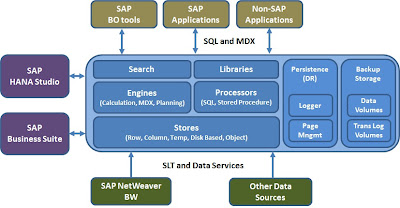 |
| yeah, yeah, reusing the same picture...it is MDM time again! (and I don't mean Mobile Device Management) |
MDM definition
"Master Data Management comprises a set of processes, governance, policies,
standards and tools that consistently defines and manages master data which excludes transactional data but may include
reference data." Wikipedia.
MDM trends for 2012-2013
- Market Consolidation (see mega vendors below)
- Tool Convergence (aka: multi-entity, multi-domain...yep called this 4 years ago)
- BPM for MDM (more governance automation as expected)
- Data Virtualization / MDM as a Service (have been writing about the MDM SOA intersection since 2007)
- Data Quality as a Service
- Address standardization / cleansing
- Cleanse/Dedup/Merge across multiple Salesforce installations in the cloud
- Data Profiling as a Service
- IMDBs & Big Data (see two prior posts on in memory databases)
- Forrester trends blog here: http://blogs.forrester.com/rob_karel/12-01-05-mdm_in_2012_what_was_what_will_be_and_what_wont_be
MDM mega vendors (and their associated product offerings)
- IBM
- InfoSphere MDM Server (formerly DWL and Trigo)
- Initiate Master Data Service (formerly Initiate)
- Informatica
- MDM (formerly Siperian)
- Oracle
- Customer, Product, Supplier, and Site Hubs (Oracle and Siebel)
- Data Relationship Management (formerly Hyperion)
- SAP
- NetWeaver MDM
Gartner Magic Quadrant leadership is very closely correlated to the mega vendors above and not much changed from 2011 to 2012. Only Informatica and IBM continue to show as leads in all three areas below:
- 2012 MDM (customer data solutions):
IBM, Oracle, Informatica - 2012 Data Integration:
Informatica, IBM, SAP, Oracle, SAS - 2012 Data Quality: Informatica, SAS, Trillium, IBM, SAP
- 2011 MDM (customer data solutions): IBM, Oracle, Informatica
- 2011 Data Integration: Informatica, IBM, SAP, Oracle, SAS
- 2011 Data Quality: SAS, Informatica, Trillium, IBM, SAP
According to Forrester, Informatica (Siperian) is the MDM leader followed by IBM (Initiate Systems), and per link below, the same two players are leading on data virtualization.
- http://blogs.forrester.com/business_process/2010/01/introducing-the-mdm-markets-newest-800lb-gorilla-informatica-acquires-siperian.html
- http://www.informatica.com/us/company/news-and-events-calendar/press-releases/01092012_forrester_data_virtualization_wave.aspx
Without having a personal preference on a specific technology (have an IBM / Initiate Systems certification and experience with Siperian and Oracle PIM) it seems that Informatica is moving towards taking the gold here, and (somewhat) coincidentally it will be the product of choice for my next CDI POC to concentrate on hierarchy management, data stewardship and data governance. Below are a few more Informatica reference links supporting leadership claims:
- http://globenewswire.com/news-release/2012/10/23/499182/10009539/en/Informatica-Positioned-in-Leaders-Quadrant-in-2012-Master-Data-Management-of-Customer-Data-Solutions-Report.html
- http://www.information-management.com/blogs/master_data_management_mdm_siperian_informatica-10017071-1.html
- http://www.informatica.com/Images/03031_7159_enable-business-agility-mdm-tech.pdf
Nice to see how far Informatica has come from the old ETL days over a decade ago...
John K




